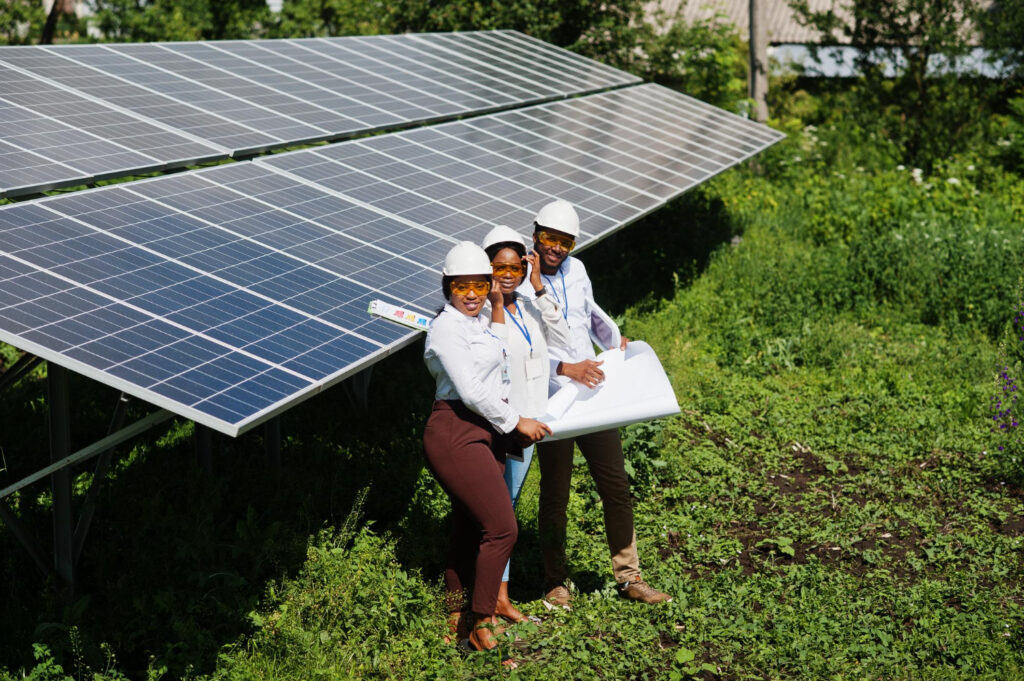Ever noticed how your inverter runs perfectly—until the hottest week of summer? That’s no accident. Heat, dust, and loose connections are silent lifespan killers. If you’re serious about reliability, learning how to maintain hybrid solar inverters for maximum lifespan is the single best habit you can build in. Within a few minutes each month, you can prevent most issues before they snowball.
Table of Contents
Introduction: Why maintenance matters
Hybrid inverters sit at the crossroads of your PV array, battery backup, and the grid. A small oversight—blocked vents, outdated firmware, a loose DC lug—can trigger derating, nuisance trips, or even early failure.
- What you gain: stable power, safer operation, and a longer service life.
- What you avoid: overheating, random shutdowns, and warranty headaches.
- What this guide gives you: a simple schedule, practical checklists, and what to fix first.
I’ve found that a little consistency beats heroic fixes. Five quiet minutes each month beats five frantic hours in peak summer.
Maintenance schedule overview — How to maintain hybrid solar inverters for maximum lifespan

A simple cadence keeps you ahead of problems.
| Frequency | Recommended actions |
|---|---|
| Daily | Glance at the LCD/app for alarms, unusual temperatures, or odd SoC swings |
| Monthly | Clean vents and grills; confirm airflow; review PV output and MPPT behavior |
| Quarterly | Inspect/torque accessible terminals; check cable insulation; test surge protection |
| Biannual | Update firmware; review battery health (SoC/DoD, cycle count, temperature trends) |
| Annually | Full inspection, thermal scan if possible; optimize settings; update maintenance log |
Tip: Set calendar reminders. Future-you will be grateful.
Core inverter components to monitor
- MPPT trackers: Watch for string voltage consistency and stable tracking curves.
- DC–AC stage: Listen for unusual fan noise; note any derating during midday heat.
- Battery interface (BMS comms): Ensure error-free communication and correct SoC reporting.
- Cooling system: Keep heat sinks clear; verify fans spin freely without grinding.
- Protection & wiring: SPDs, RCD/MCBs, DC isolators, grounding/earthing continuity.
- Monitoring tools: Mobile app, data logger, or Modbus—use them to spot trends early.
Key maintenance tasks
1) Ventilation and dust control — How to maintain hybrid solar inverters for maximum lifespan
Dust acts like a blanket. Add high ambient temperature and you get thermal stress and derating.
- Place the inverter in a shaded, well-ventilated area—never in direct sun.
- Maintain clearance on all sides (15–30 cm is a good rule unless the manual says more).
- Power down, then clean grills and fins with a dry brush or low-pressure air. No liquids.
- In dusty cities, consider a fine mesh screen over vents (clean it monthly).
- If you smell burning or see discoloration, stop and call a pro.
Bold move: Keep a small paintbrush next to the inverter. If it’s within reach, you’ll actually use it.
2) Firmware updates
Manufacturers ship updates to improve efficiency, safety, and BMS compatibility.
- Check the brand portal or app every 6–12 months.
- Back up settings first; confirm you’ve got the exact model firmware.
- Update on stable power, then verify version numbers and alarms.
- Note the change in your maintenance log (helps with warranty proof).
In my experience, firmware fixes mysterious glitches you’d otherwise chase for weeks.
3) Battery maintenance
Healthy batteries take pressure off the inverter and keep outages stress-free.
- Keep batteries cool and shaded; high temperatures shorten cycle life.
- Use conservative charge/discharge limits where possible to reduce wear.
Table: Chemistry-specific tips
| Battery type | Do this | Avoid this |
|---|---|---|
| LiFePO₄ | Operate roughly in a 20–90% SoC window; watch cycle count and temps | Prolonged 100% at high temperature |
| Lead-acid | Equalize if supported; keep terminals clean; check electrolyte levels | Deep discharges and long partial-charge |
I prefer slightly conservative settings over wringing out the last watt-hour. The system runs cooler and lasts longer.
4) Electrical and physical inspection
Loose or corroded connections cause heat, arcing, and nuisance trips.
- Inspect DC/AC cables for nicks, discoloration, or brittle insulation.
- Torque-check accessible lugs per the manual; don’t overtighten.
- Test SPDs, breakers, and RCDs; replace aging SPD modules.
- Confirm grounding/earthing continuity; clean corroded clamps and resecure.
- Keep conduit entries sealed to block dust and humidity.
Pro tip: Photograph each quarterly inspection. You’ll spot slow changes you’d miss with memory alone.
Environmental adjustments by season
Your strategy should flex with the weather. A few tweaks go a long way.
| Season | Maintenance focus | Suggested actions |
|---|---|---|
| Summer | Heat management and load balancing | Improve airflow; stagger high-inrush loads; enable grid-assist |
| Monsoon | Moisture and corrosion control | Elevate inverter; seal conduit entries; apply anti-corrosion spray |
| Winter | Battery temperature sensitivity | Maintain moderate ambient; avoid heavy discharge when batteries are cold |
Question to ask yourself: could this be scheduled for a cooler time of day instead?
Troubleshooting common issues
- Overheating or derating at noon: Clear vents, check fan operation, improve shade; consider a louvered cabinet.
- Battery not charging fully: Verify PV string voltage, inspect MC4 connectors, confirm BMS limits and setpoints.
- Random shutdowns or trips: Check SPD health, grid voltage/frequency windows, and loose neutrals.
- Odd MPPT behavior: Look for shading, string mismatch, or a failing module; review daily production curves.
- Noisy operation: Fan bearing wear or blocked airflow; clean first, then evaluate fan replacement.
Rule of thumb: If faults repeat after a clean and reset, stop and call a certified technician.
Pakistan-specific considerations
- Heat and dust: Shorten cleaning intervals in Lahore, Multan, Bahawalpur, and Quetta. Shade plus airflow is non-negotiable.
- Voltage fluctuations: Configure grid protection windows correctly; consider a stabilizer for sensitive loads if nuisance trips persist.
- Monsoon humidity: Use IP-rated enclosures where needed; add silica gel packs inside adjacent cabinets.
- Local brands and service: Work with certified installers familiar with Inverex, Solis, GoodWe, and local grid codes.
Small habit, big payoff: Schedule firmware checks before peak summer.
Maintenance log template
Logging turns good maintenance into great maintenance. It also helps with warranty claims.

| Date | Task | Measurements/Notes | Next action |
|---|---|---|---|
| 10-Aug-2025 | Cleaned vents and heat sink | Inverter temp stable at 42°C | Recheck in 30 days |
| 01-Jul-2025 | Firmware updated to v2.3.1 | No alarms post-update | Verify again next week |
| 15-Jun-2025 | Battery health review | SoC 35–85% daily; cycles normal | Lower charge current |
Prefer digital? A simple spreadsheet with photos and comments works brilliantly.
Conclusion and next steps
Think of your hybrid system as a team: PV strings, MPPTs, batteries, and protections all play a part. Keep heat down, dust out, connections tight, and firmware current, and that team performs beautifully for years. I’ve seen “boring” habits—monthly vent cleaning, seasonal settings tweaks, and a tidy log—outperform expensive fixes every single time.
- Set calendar reminders for monthly and quarterly checks.
- Take a quick photo during each inspection; it makes trends obvious later.
- Book an annual pro visit before peak summer.
Small, steady care beats big repairs. Start with five minutes today—your future self will thank you.
ALSO READ: Lahore Heatwave 2025: Solar AC Backup & Savings
FAQS
How often should I service a hybrid solar inverter?
A quick monthly clean and a quarterly visual/torque check cover most needs. Add a biannual firmware review and an annual professional inspection for peace of mind.
What temperature is too high for safe operation?
Each brand publishes its own derating curve, but frequent internal temps above 60–70°C usually trigger reduced output. If you see persistent high temps at noon, improve airflow and shade, then reassess.
Do firmware updates really make a difference?
Yes. Updates often fix BMS communication quirks, refine MPPT behavior, and patch safety issues. Back up settings, confirm the exact model file, and verify the version after the upgrade.
Should I install a voltage stabilizer with my system?
If your area sees regular brownouts or wide voltage swings, a stabilizer can protect sensitive loads. Still, configure the inverter’s grid windows correctly first and monitor nuisance trips before adding hardware.
How can I tell if my MPPTs are tracking properly?
Healthy daily curves rise smoothly in the morning, plateau near midday, and taper in the evening. Flat spots, sawtooth patterns, or sudden drops hint at shading, string mismatch, or a weak module.
Is compressed air safe for cleaning?
Use short bursts of low-pressure air and keep the nozzle a few centimeters away. Power down first. Avoid liquid cleaners, which can force moisture into vents and void warranties.


